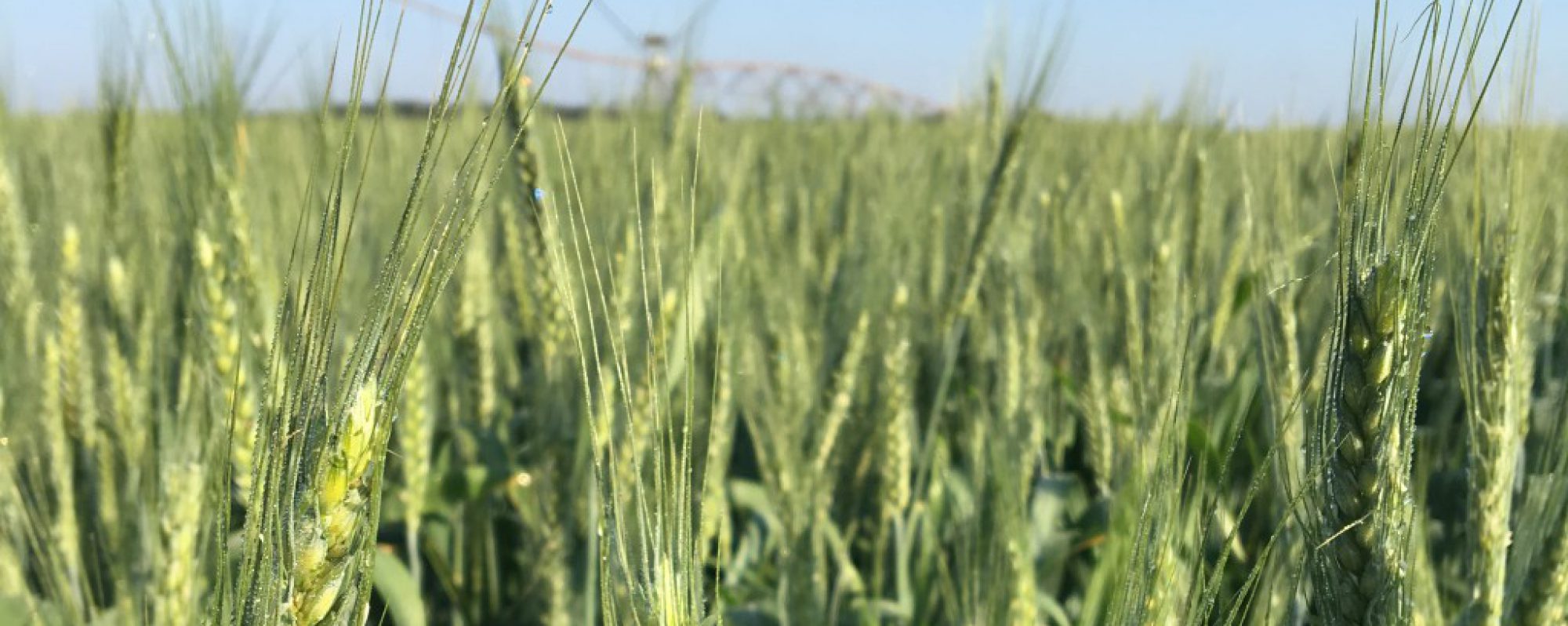
The disease causing us the most concern in Wilcox County now is areolate mildew. It’s been discussed the past few years, and UGA is not sure exactly what yield loss will be. This and last week we are not only seeing it in some fields, but seeing it move up the plant as high as 7th and 5th leaf. UGA Extension Pathologist Dr. Bob Kemerait says if we’re 4 or less weeks from defoliation, we can let it go. The issue is we are a long way off, especially with our late planted crop. I just want to make our growers aware this is showing up, but most cotton does not need a fungicide right now.
The one common denominator in the only fields that needed a fungicide for areolate mildew is tall plants and rank growth. Conditions for areolate mildew are similar to target spot: rain, humidity and rank growth. The one field we sprayed, mildew was on every single plant as well as heavy on the lower third of the plant. Those leaves were starting to roll up but no drop off. The decision to treat is somewhere between lots of disease moving through and before we start defoliating. Once we defoliate 25 – 30%, a fungicide is likely not going to help.
Here is information shared from Dr. Kemerait on areolate mildew and target spot this week:
- Target spot and areolate mildew are present in a number of fields this year.
- At times, target spot and areaolate mildew appear late enough in the season that the defoliation resulting from these diseases does not affect yield and use of fungicides is not needed.
- The question for both diseases is not, “Can we protect the cotton in this field with a fungicides?” but rather, “Should we protect the cotton in this field with a fungicide?”
- We have very very little data on areolate mildew, but from what I do have, I am confident that we can easily control this disease using strobilurin products like Headline or Quadris, or mixed products like Priaxor or Elatus. Proline may work as well but I don’t have data.
- Though we can control areaolate mildew, does it make us any more yield than if we didn’t control it? When conditions are favorable, areolate mildew can rapidly defoliate a cotton crop. If a grower is withing 3-to-4 weeks of defoliating anyway, I would NOT use a fungicide. If the crop still had 4 or more weeks to go, I would consider weather, yield potential, how much disease is in the field and then decide to spray or not.
- If areolate mildew, or target spot, is already well-established in the field (i.e. causing significant defoliation, then there is little hope that a fungicide will help.
- Target spot is a significant concern this year and is widespread. Not every cotton grower in the state needed to spray a fungicide for target spot, but I encourage growers to carefully consider their options.
- Target spot is of particular concern this year because a) the wet and warm conditions are perfect for an explosion of the disease, b) the disease has been found early in many fields, and c) the price of cotton makes protection 100-250 lbs lint/acre attractive.
- I believe the best window of opportunity for managing target spot is from the first week of bloom to the sixth week of bloom.
- A little target spot in a crop (meaning scattered spots on lower leaves and no defoliation) during the first week of bloom and favorable weather IS a concern, as it would be at the third week as well. A “little target spot” at the 4th-6th week of bloom is much less of a concern.
- When a fungicide program begins as early as the first week of bloom because of the disease situation; a second application may be beneficial two-to three weeks later. I don’t envision an application, follow-up or otherwise, after the 6th week.
- It will be quite difficult to control (impossible?) target spot if there is already significant defoliation in the field before an application is made. If 25-30% of the leaves are already gone, a fungicide likely won’t work.
- THE THREE MOST IMPORTANT POINTS TO MANAGE TARGET SPOT, in order of importance, are 1. TIMING 2. COVERAGE 3. SELECTION of FUNGICIDE.

